(ALERT! Lots of good pictures and no massacres in this episode! The Idiots apologize for the long explanation - but the photos take on more meaning when one knows the backstory. Readers choice - skip to the pictures or read the exposition!)
The good news was that Interstate 70 was finally going to be completed to a junction with I 15 at Cove Fort in western Utah. The bad news was that it was being routed through some beautiful, near-pristine wilderness.
The good news was the surveyors discovered the largest “Fremont Indian” village known – an amazing archeological find. The bad news was the prehistoric village was right in the proposed I 70 route through Clear Creek Canyon.
The good news was that the village was built on Five Finger Ridge, a series of hills made up of sand and gravel and had been largely untouched for about 600 years, resulting in remarkable preservation. The bad news was that the contractor bid on completing that section of the Interstate included using the material from those hills as “fill” and any change would cost additional millions for what was already a very expensive highway project.
The good news is that I 70 provides a great route across Colorado and Utah on the way to Southern California. The bad news is that most of that precious prehistoric site was destroyed to build it.
With today’s sensitivity to America’s Native history, it is hard to imagine this destruction being allowed. But when the village was discovered in the mid-1980s, I 70’s completion had already been delayed for about 30 years. The routing in Colorado and Utah had been a political hot potato through three decades. And the Fremont Indians were a prehistoric group – no modern Native American tribes claimed those sites as their direct heritage.
A compromise was made. Archeologists were given access for a few months to glean all they could from the site before it was bulldozed... and Utah created Fremont Indian State Park and Museum to house some of the artifacts and, more importantly, to preserve the prehistoric rock art on the cliffs surrounding the valley.
The Idiots knew almost nothing about the Fremont Indians. When they were growing up, American history classes taught little about Native Americans was pretty limited. The impression given was that America was mostly “empty” - especially the Great Plains and Rocky Mountain region - and it was just waiting for the Europeans/Americans to fill it up.
The reality was quite different. There were significant populations of Natives and their governments, economics, languages, and cultures were rich and widely varied. Their quality of life – measured by nutrition and shelter and physical health – was better than that of their counterparts in Europe. Trade was active across thousands of miles both east to west and north to south. If you excavate an ancient Native home in Saskatchewan there’s a good chance you’ll find an ornament made of shell from a shore in modern-day Mexico. If you excavate in Florida, there’s a good chance you will find a pipe bowl made of catlinite from Minnesota. All of this travel and trade was across established routes… and all done on foot.
In the era from about 900 to 1400 CE, in the region that is now Colorado, Utah, Arizona, New Mexico, Chihuahua, and Sonora, there were several large prehistoric Indian civilizations. It is impossible to know what they called themselves as they did not have formal written languages, but we know the names assigned to them by later Natives and by researchers. Shrouded in mysteries, the names evoke magic… The Ancient Puebloans (formerly called Anasazi)… the Hokokam… the Mibres… the Mogollon… and the Fremont People.
John Charles Fremont was a well-known American explorer whose name has been assigned to many geographical features across the West, including the Fremont River in Utah. When a number of archeological sites were found along this river, the ancient civilization who built them were dubbed “the Fremont People.”
Some of these groups built large structures and cities and left a dramatic legacy. The Ancient Puebloans built large, amazing pueblos, like those at what we now call Mesa Verde, Canyon de Chelly and Chaco Canyon… and the Hopi and the pueblo Indians of New Mexico are direct descendants and can help interpret the symbols and ancient languages of their ancestors.
Great changes occurred in just a few centuries. Climate changes forced cultures that depended on agriculture into mass migrations and abandonment of traditional homelands. Diseases brought from Europe devastated Native populations with no evolved immunities. These plagues were carried tribe to tribe by traders and explorers. By the time settlers arrived, they found vastly diminished populations, resulting in the myth that the Native populations were small and the land largely unoccupied.
The Fremont Indians never lived in large groups. Until the village in Clear Creek Canyon was discovered, the prevailing belief was that they formed small family groups, living a wandering hunter-gatherer existence. All of that was revised when the excavations showed that they did gather in larger groups and built permanent dwellings. It is likely they combined hunting and seasonal migration with agriculture and villages.
There were probably several reasons for selecting Five Finger Ridge for the village site. It was higher than the canyon floor, with good solar heating in winter and perhaps some relief from the mosquitoes in the marshy areas along the creek. It was also close to cliffs and side canyons that provided privacy for religious ceremonies and stone faces upon which they could invoke the spirits and record their stories.
A visit to Fremont Indian State Park and Museum is a study in contrasts. Most people rush down Clear Creek Canyon on the Interstate, possibly noting some attractive cliffs while focused on distant destinations. Most have no idea of the area’s significance. They drive the original Spanish Trail with no thought for Jedediah Smith and his group who first mapped the route in 1826. They drive over the bones of a prehistoric culture they have never heard of.
Those that exit the freeway and meander have a very different experience. Walking the trails, visitors are struck by the solitude. The whine of tires is replaced by the gentle soughing of breezes through pines and sagebrush. Entering the side canyons is similar to entering a cathedral… sound is hushed, light is shadowed and an air of spirituality suffuses the surroundings.
The Idiots camped there and spent parts of two days absorbing the beauty. They took too many pictures for one episode, so they ask readers patience as the pictures continue in Episode 6.
--------------------------------------------
Looking across the valley, one can see the interstate highway and what remains of Five Finger Ridge.
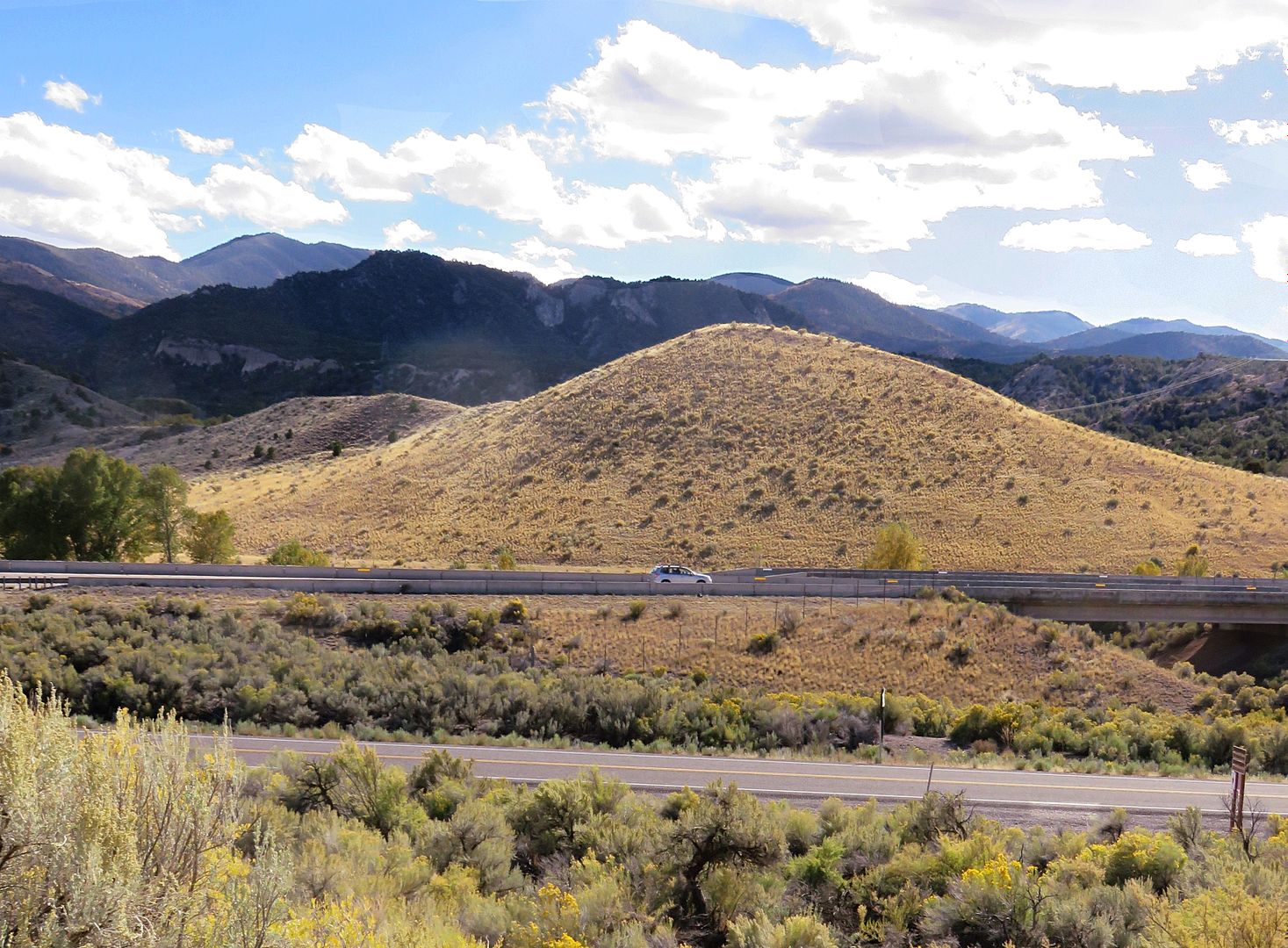
Looking the other direction, one sees some colorful cliffs and high desert foliage.
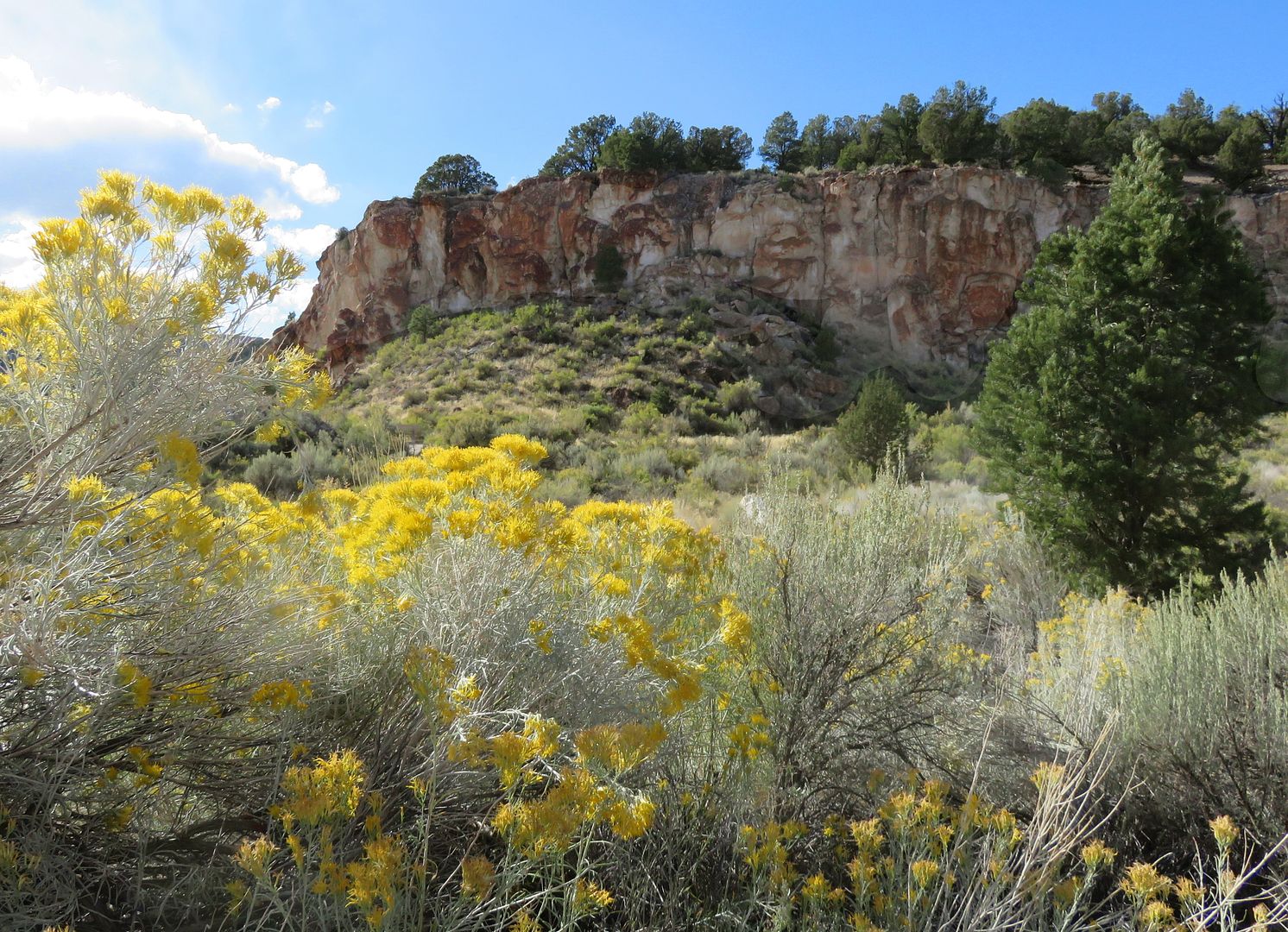
Many of the rocks are covered in a dark red-brown mineral finish called “desert varnish.” Weather and lichens sculpt the surface into intricate designs.
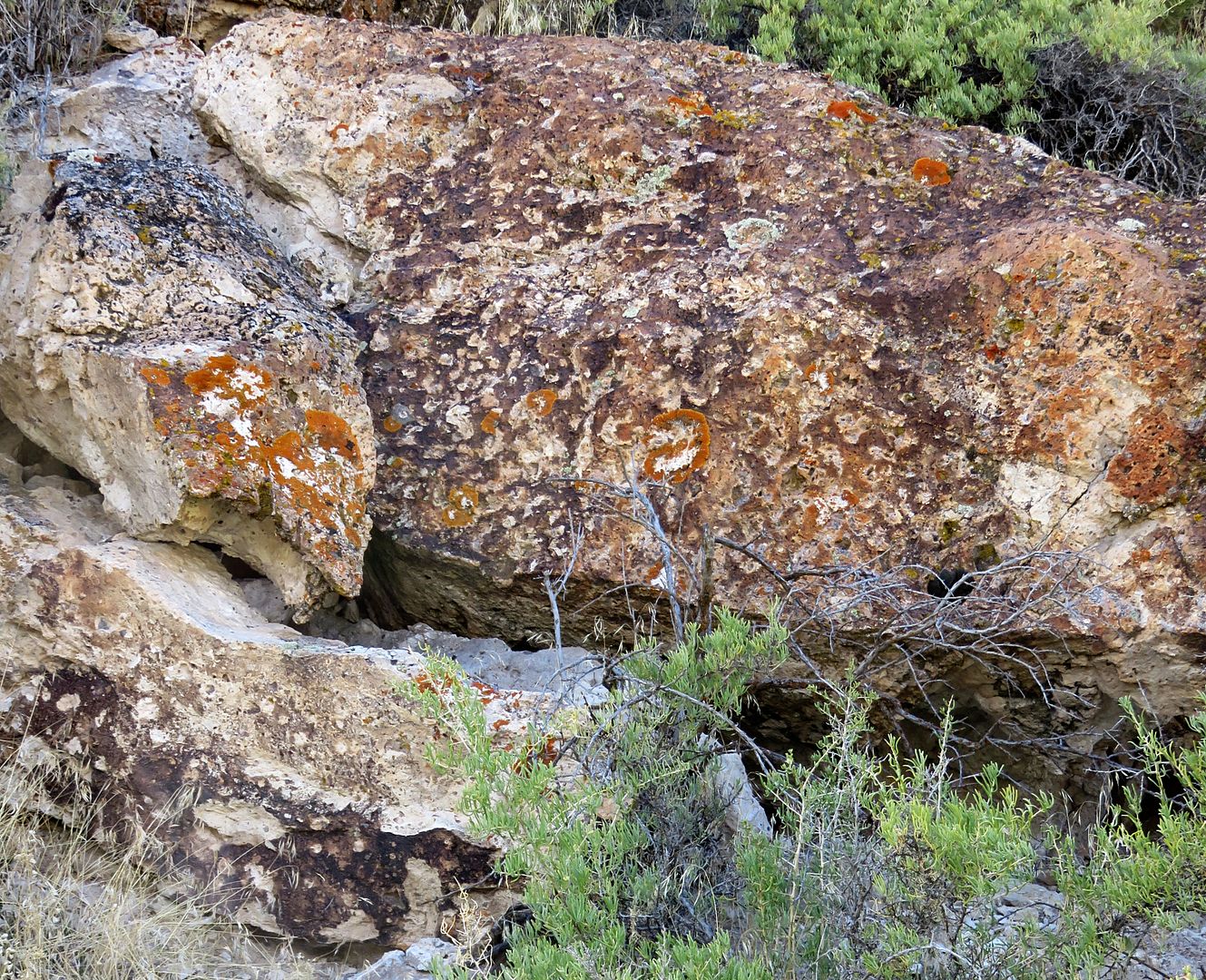
Where’s Waldo?! Approaching the cliffs, it is easy to miss that some of the designs in the rock face were not produced by nature. In fact, the cliffs are a miles-long art gallery.
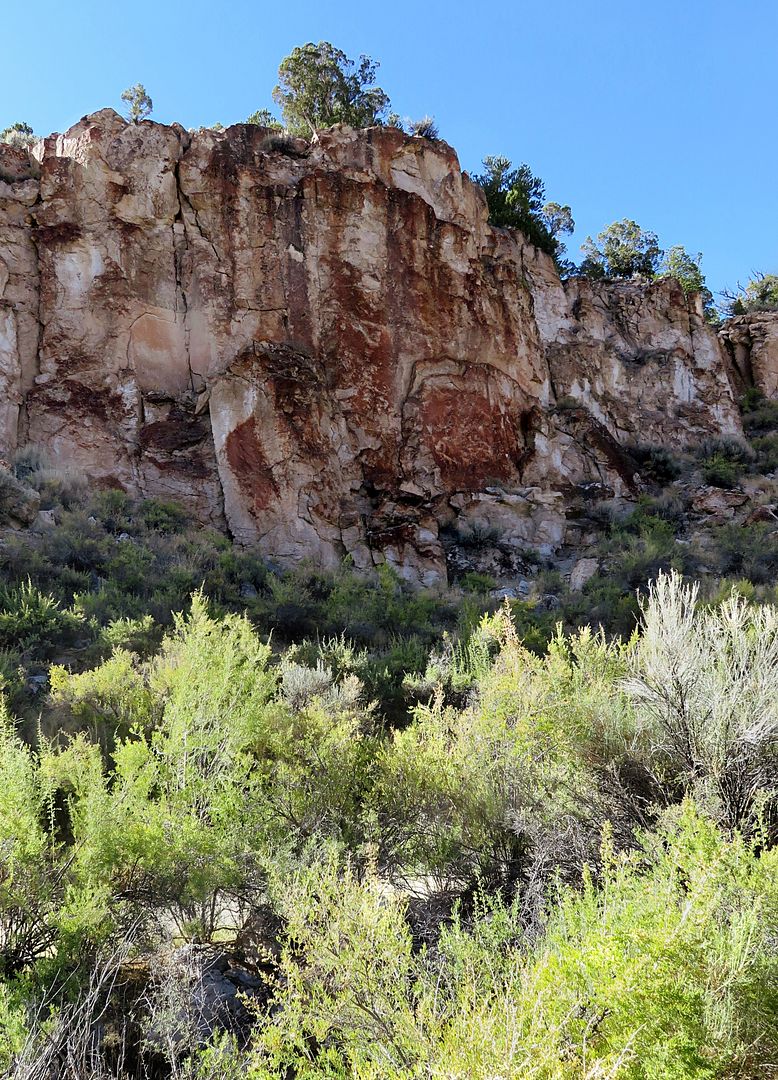
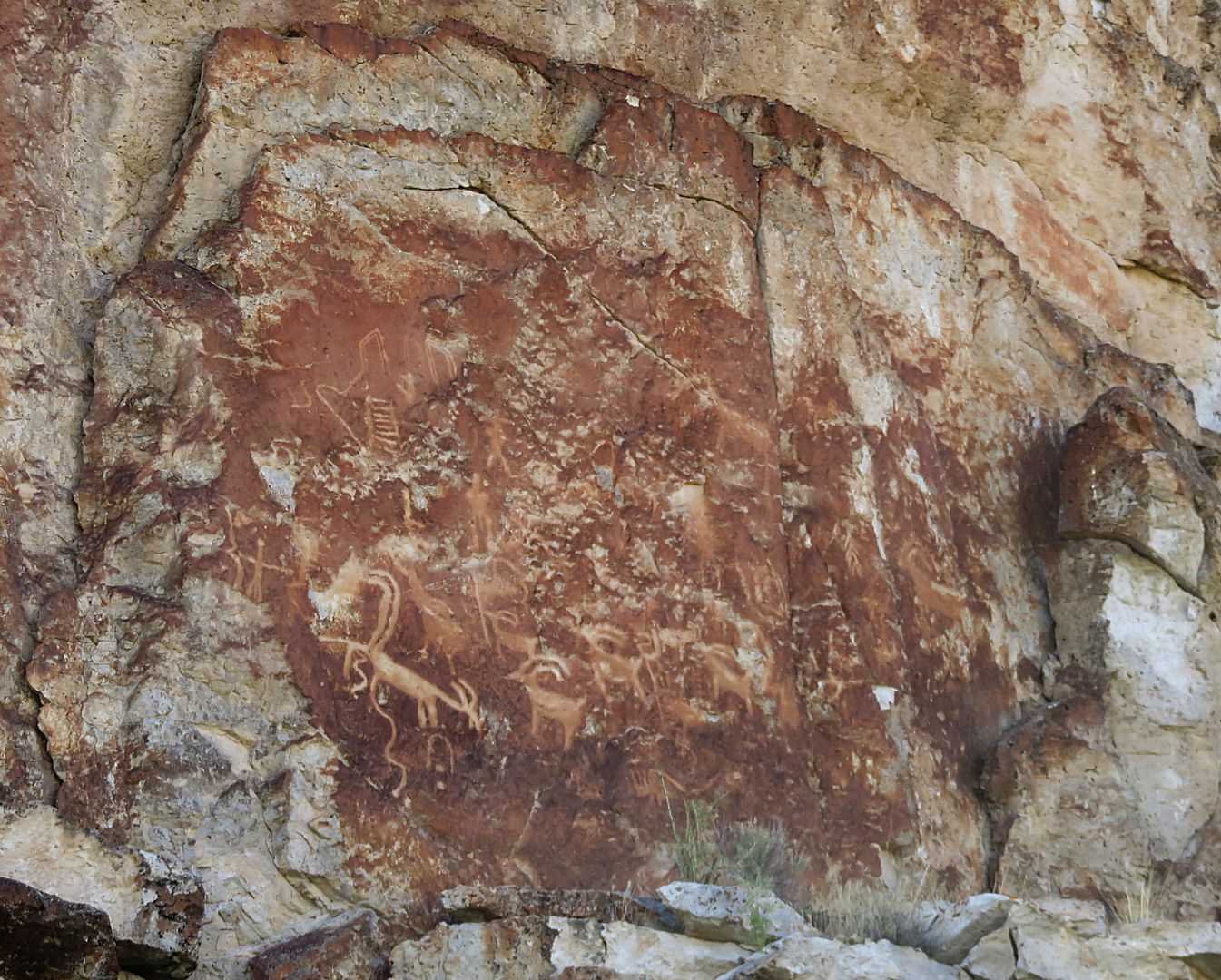
Sometimes it takes a sharp eye – and the assistance of a trail guide – to pick out the rock art.

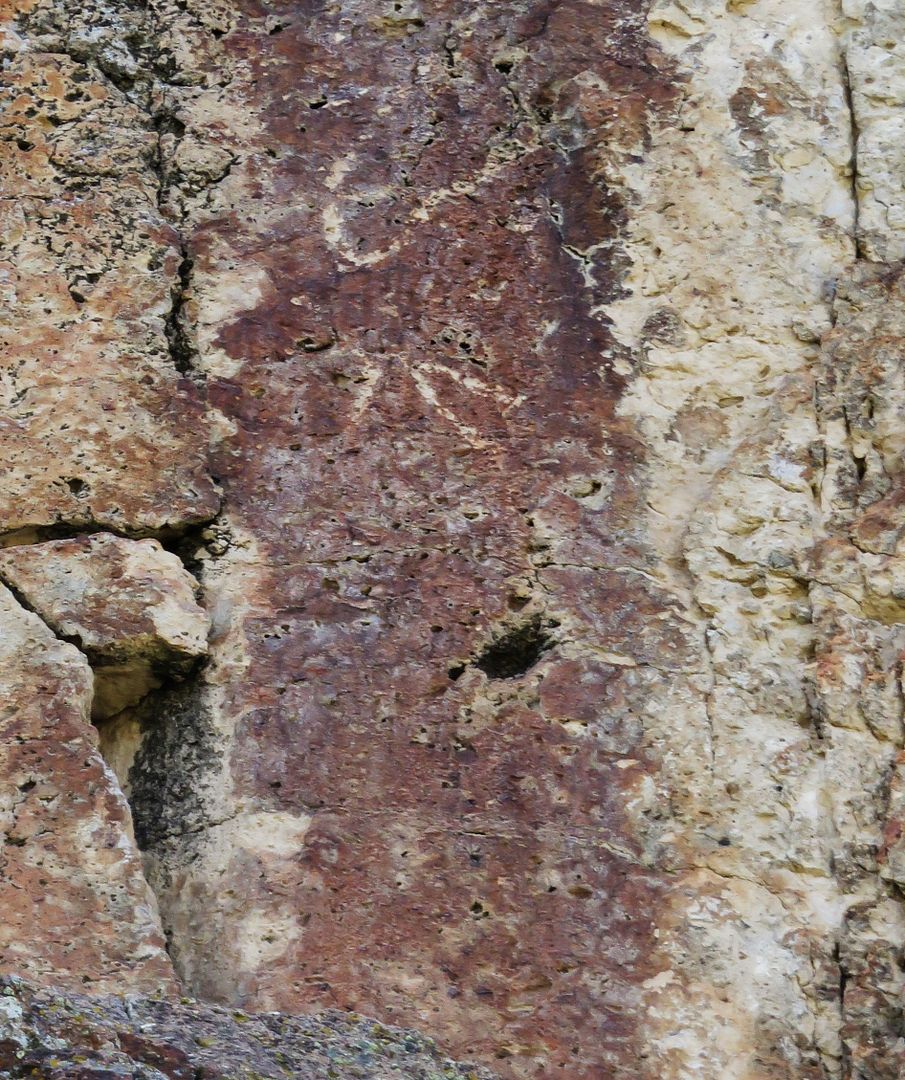
For example… one cliff section with multiple “galleries”…
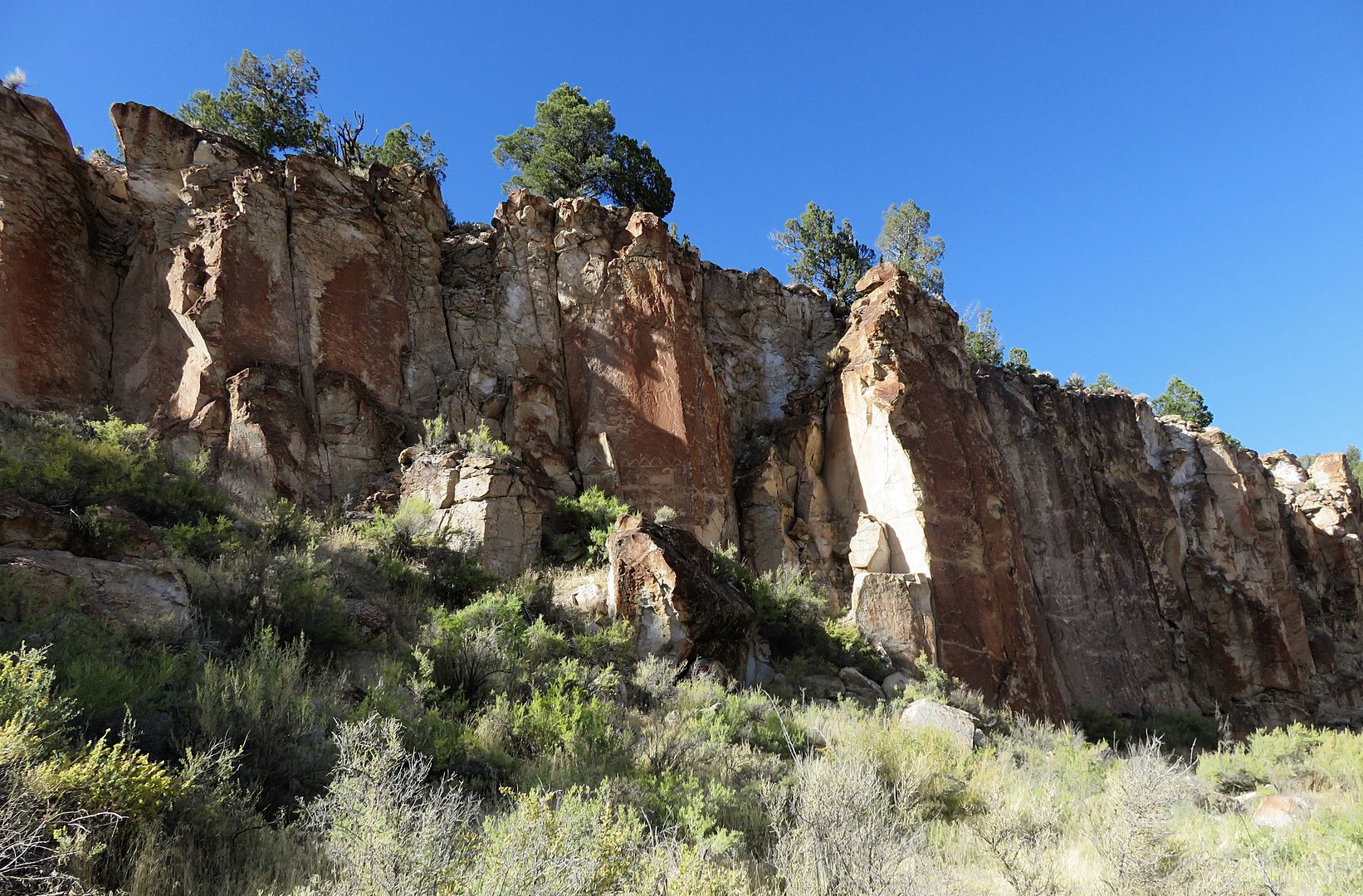
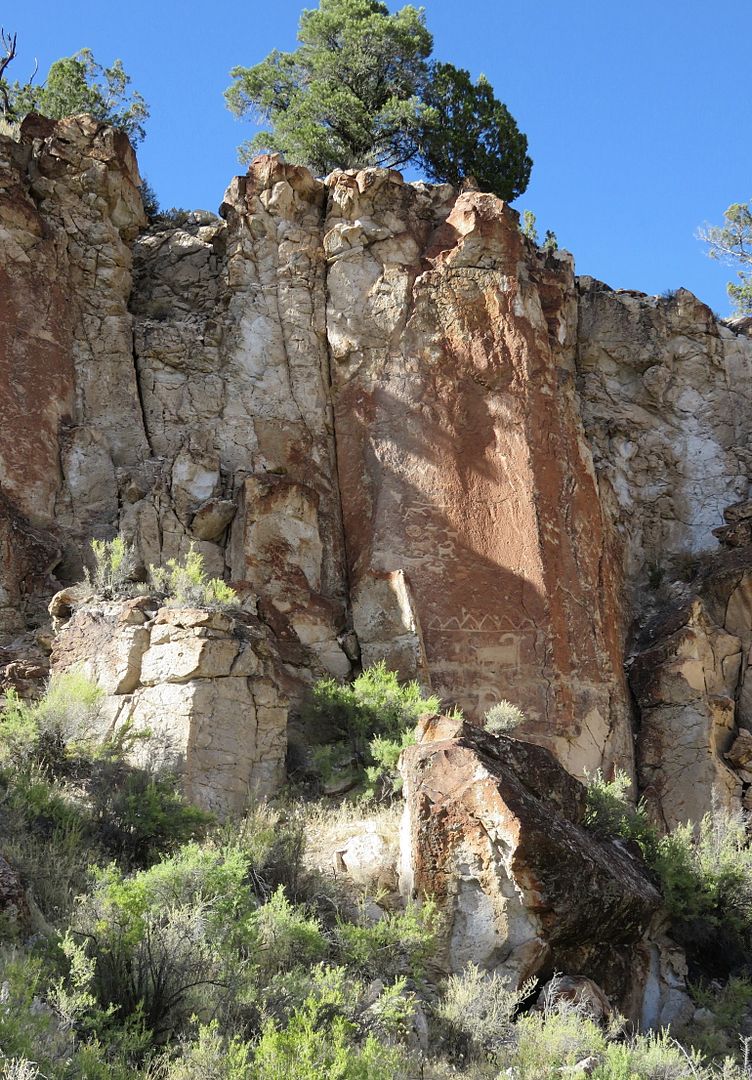
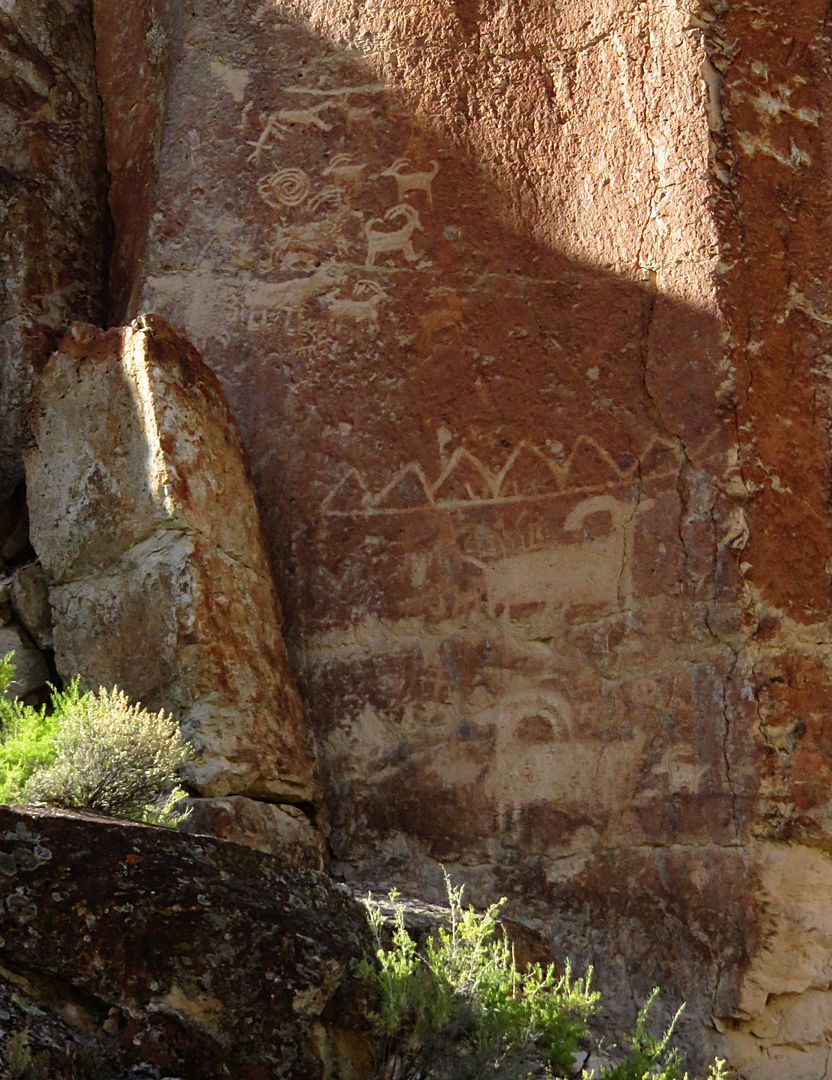
In the 1970s it became a common belief that aliens visited earth in the past and that there was evidence in Native American rock art. Though we know spiritual activities often involved elaborate headpieces and that antlers and horns representing the animals the natives hunted and depended on certainly adorned the shamans… it is still fun to see “spacemen” in the rocks.
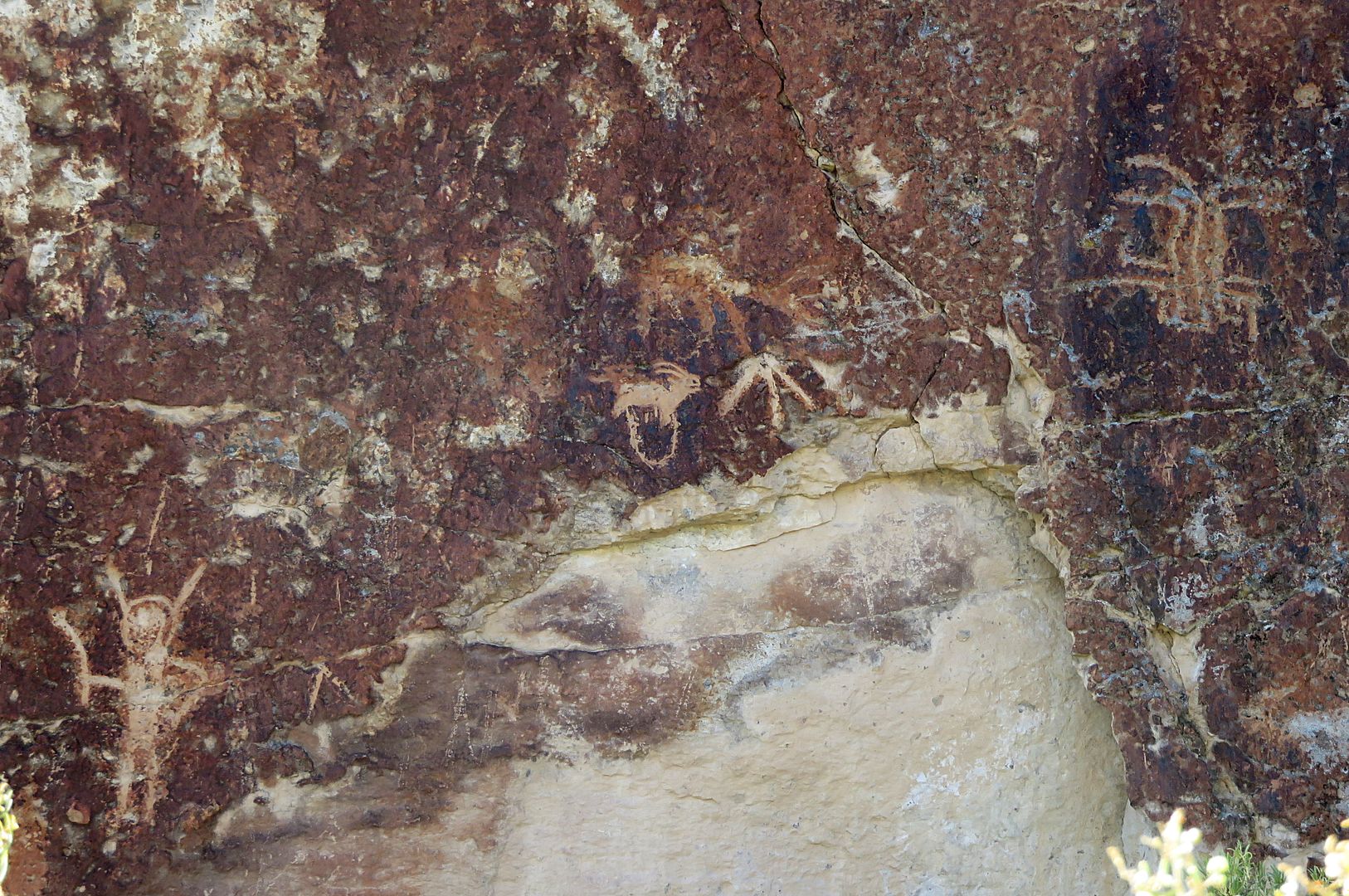
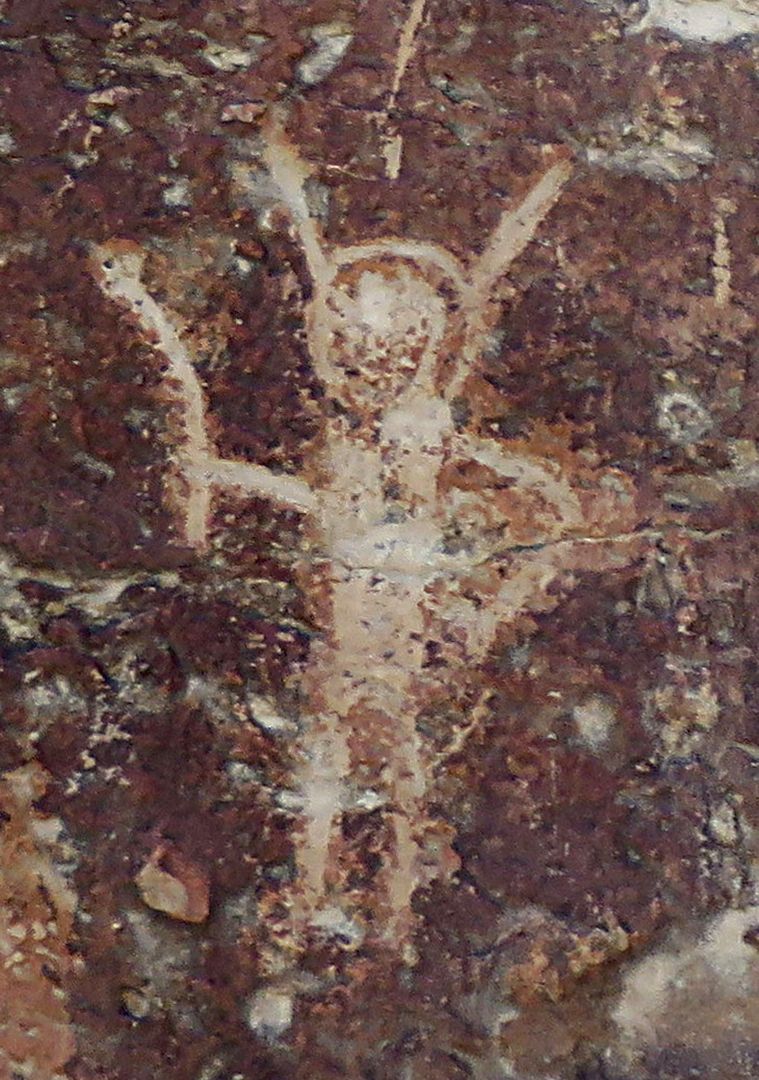
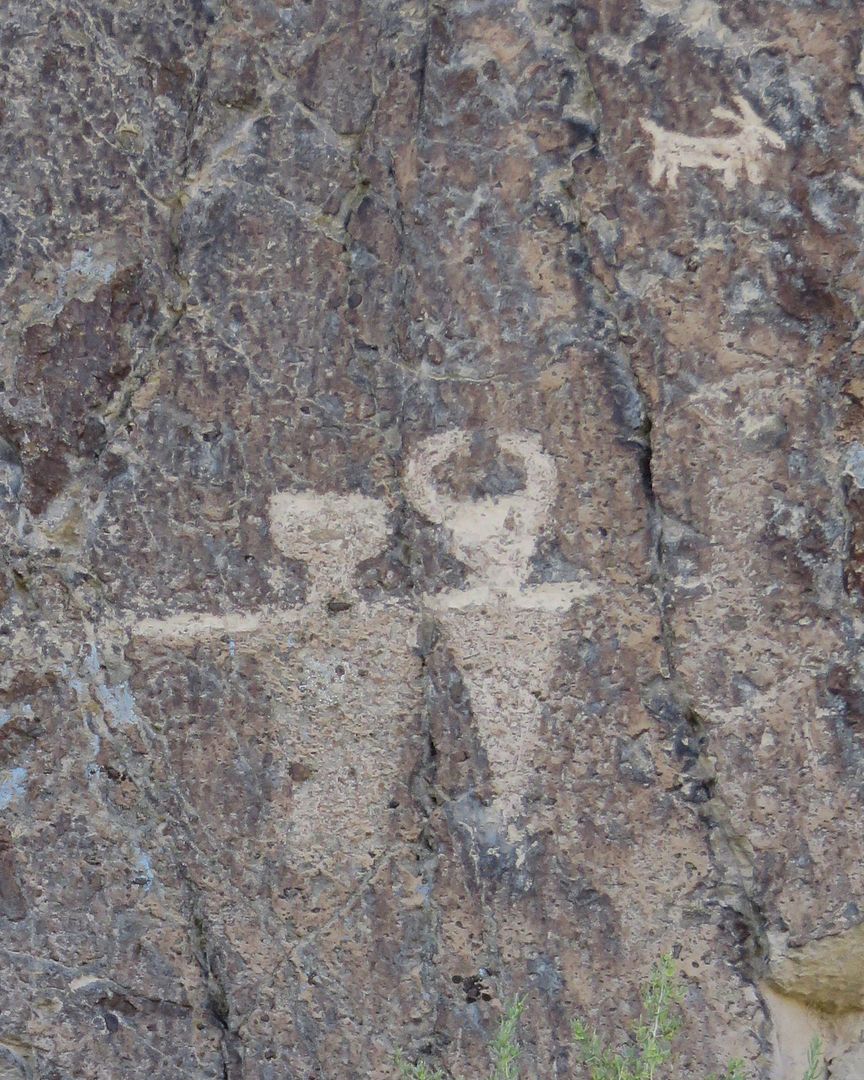
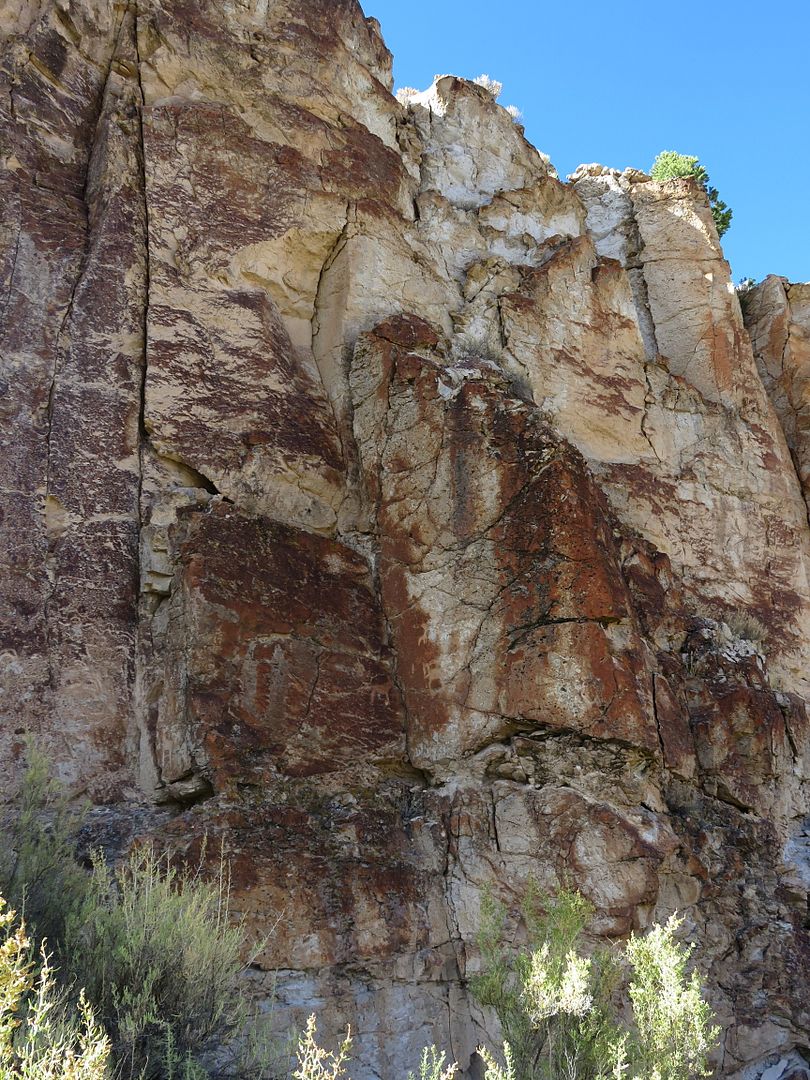
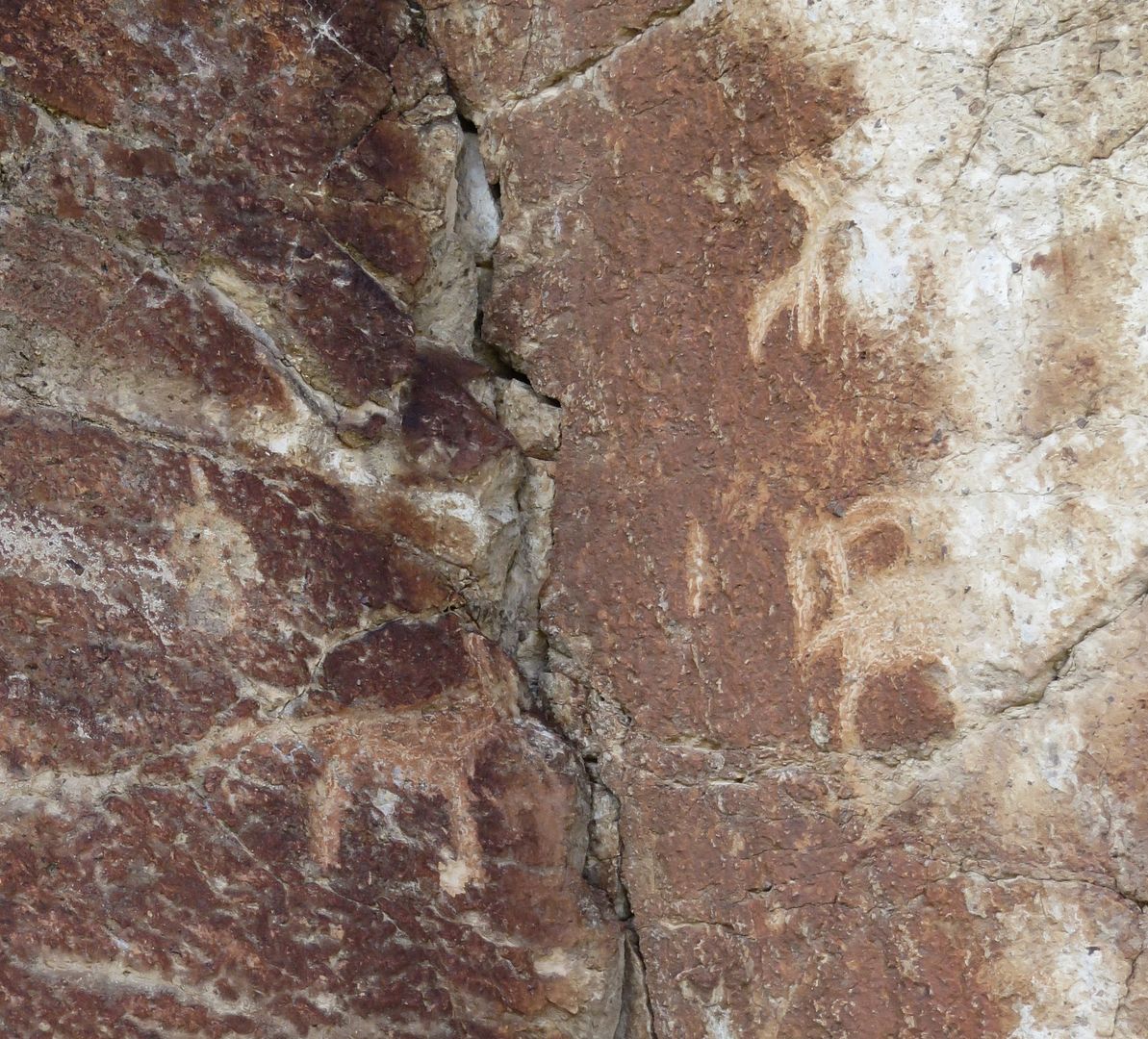
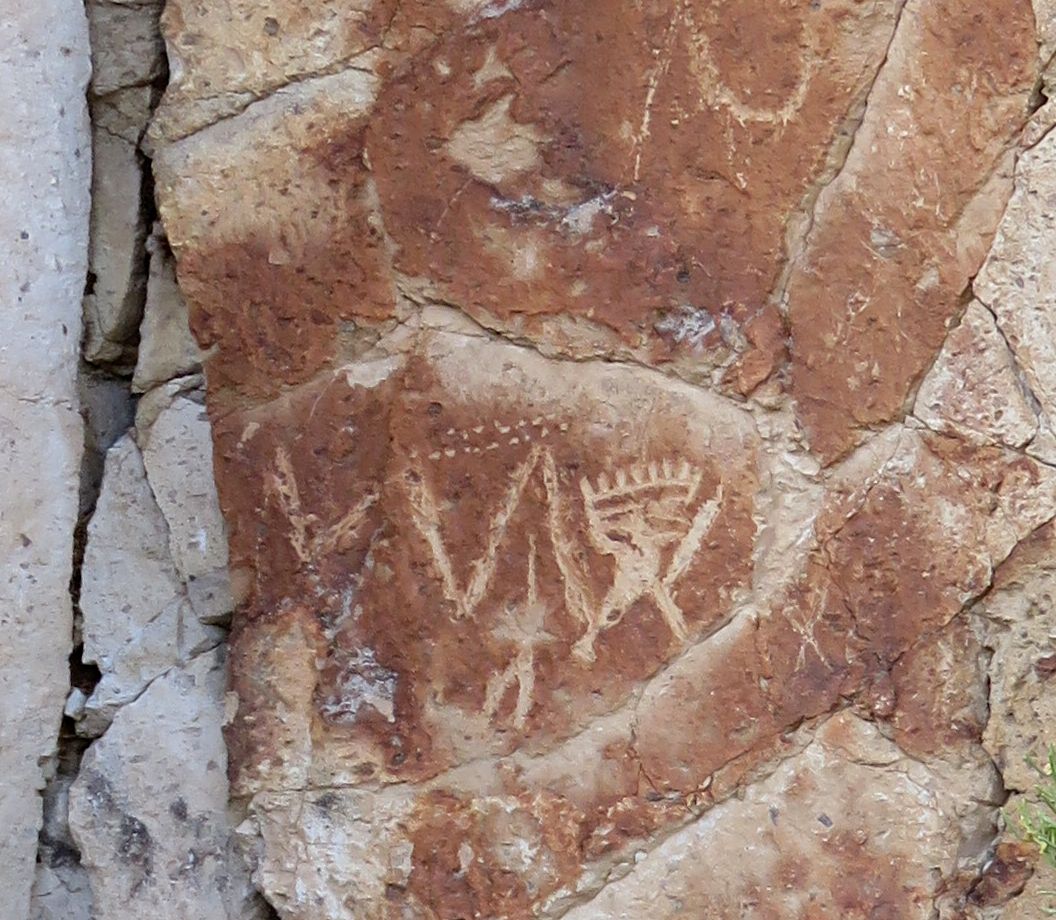
Idiot She spotted an evocative boulder she dubbed “Boxer Rock”
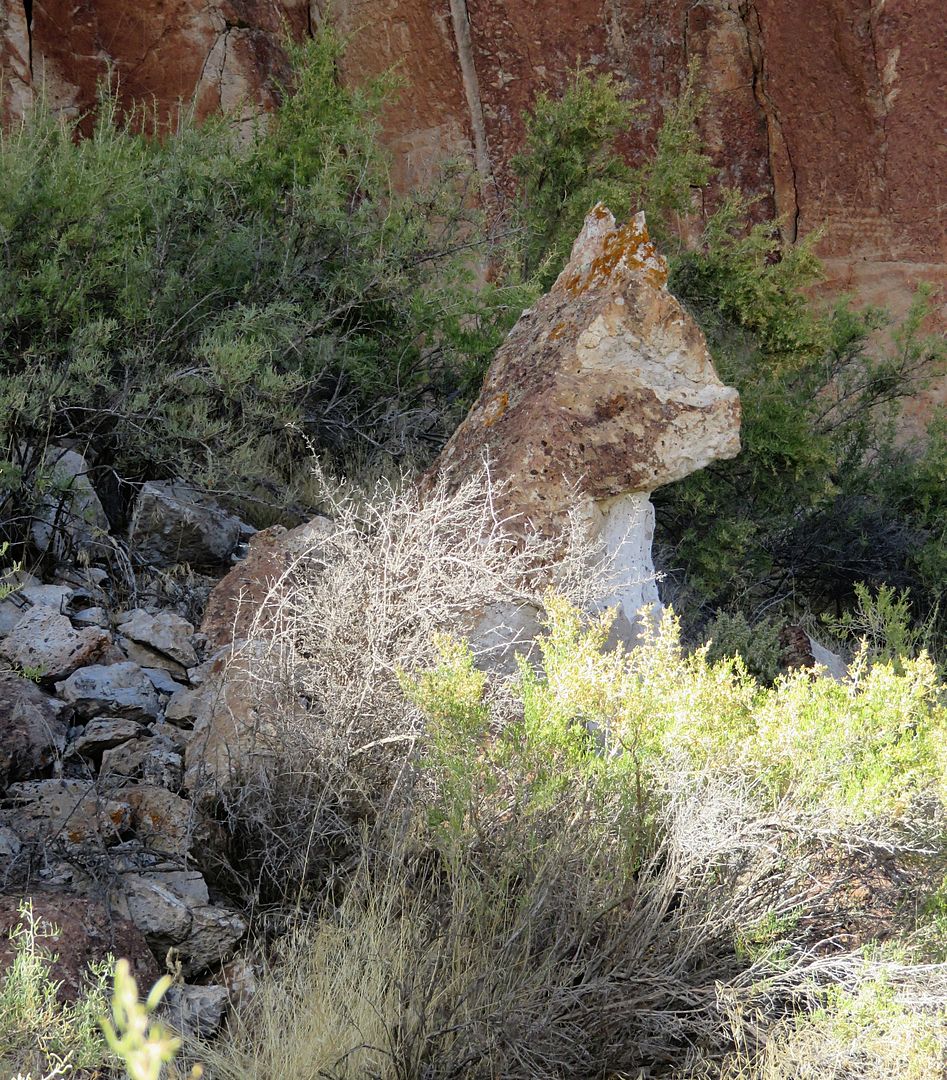
When the Smith party passed through, they added their carved messages and initials to the galleries, and visitors over the years did likewise. But seriously… don’t people know better now? And for heaven’s sake, with all the space available… what would provoke a person to scratch over ancient rock art?
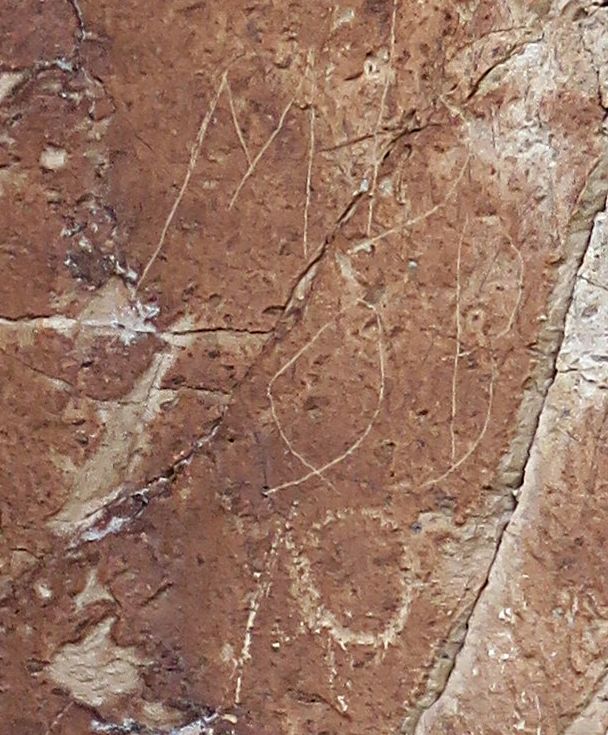
October blooms accent the beauty of the cliffs. Peering across to a box canyon, one might easily miss the art that decorates the entrance to a hidden “chapel.”
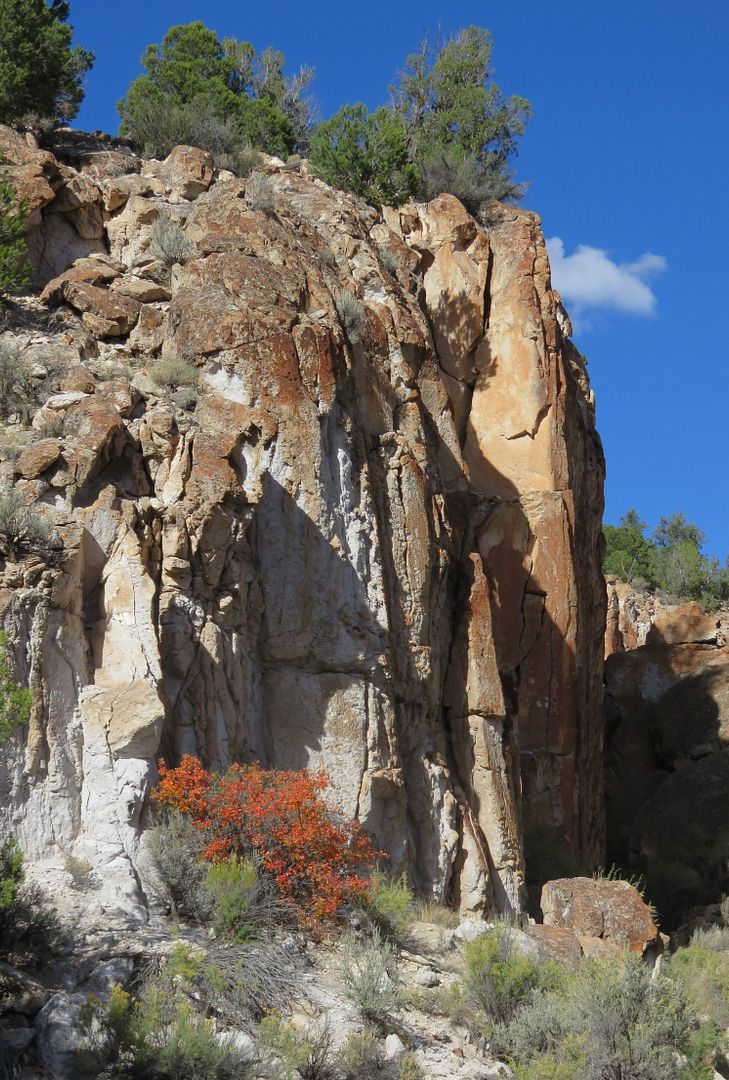

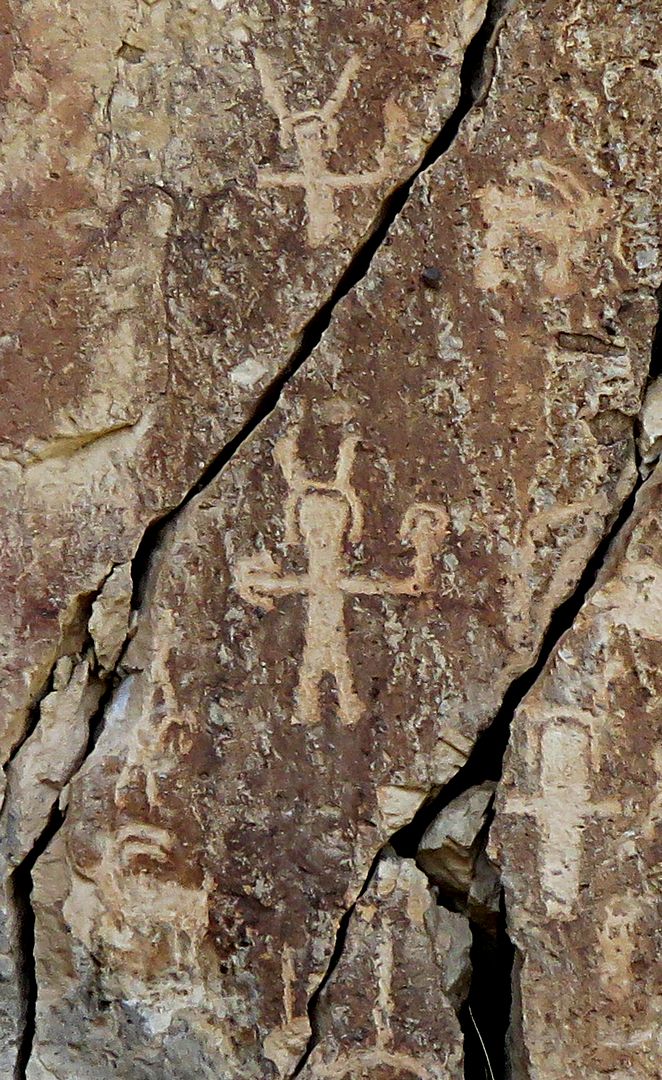
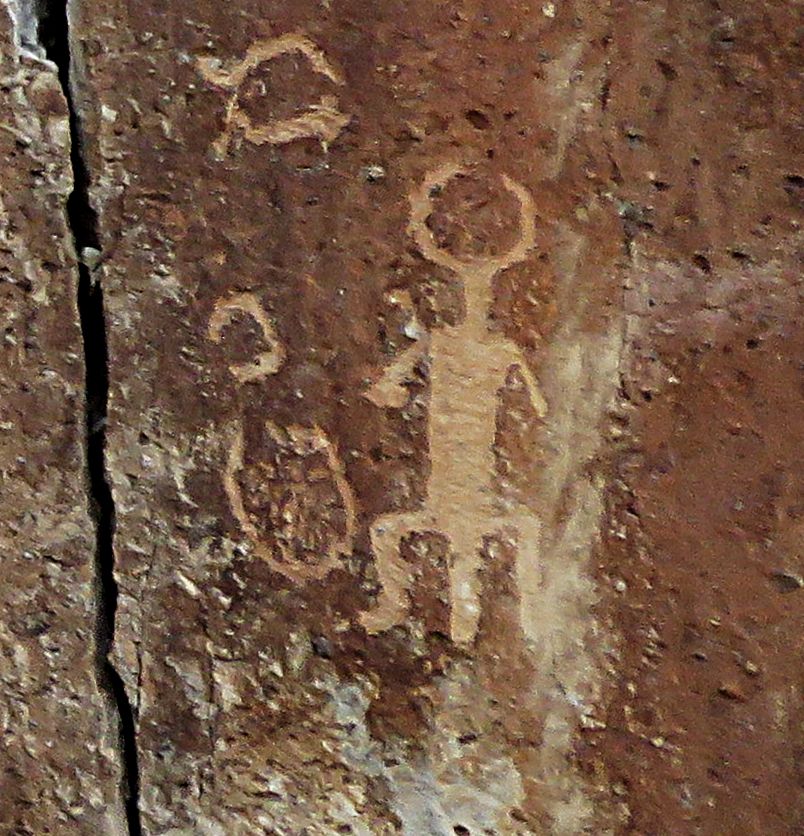
A monolith towers over the museum… and bears several more chapters of the history of the Fremont People.
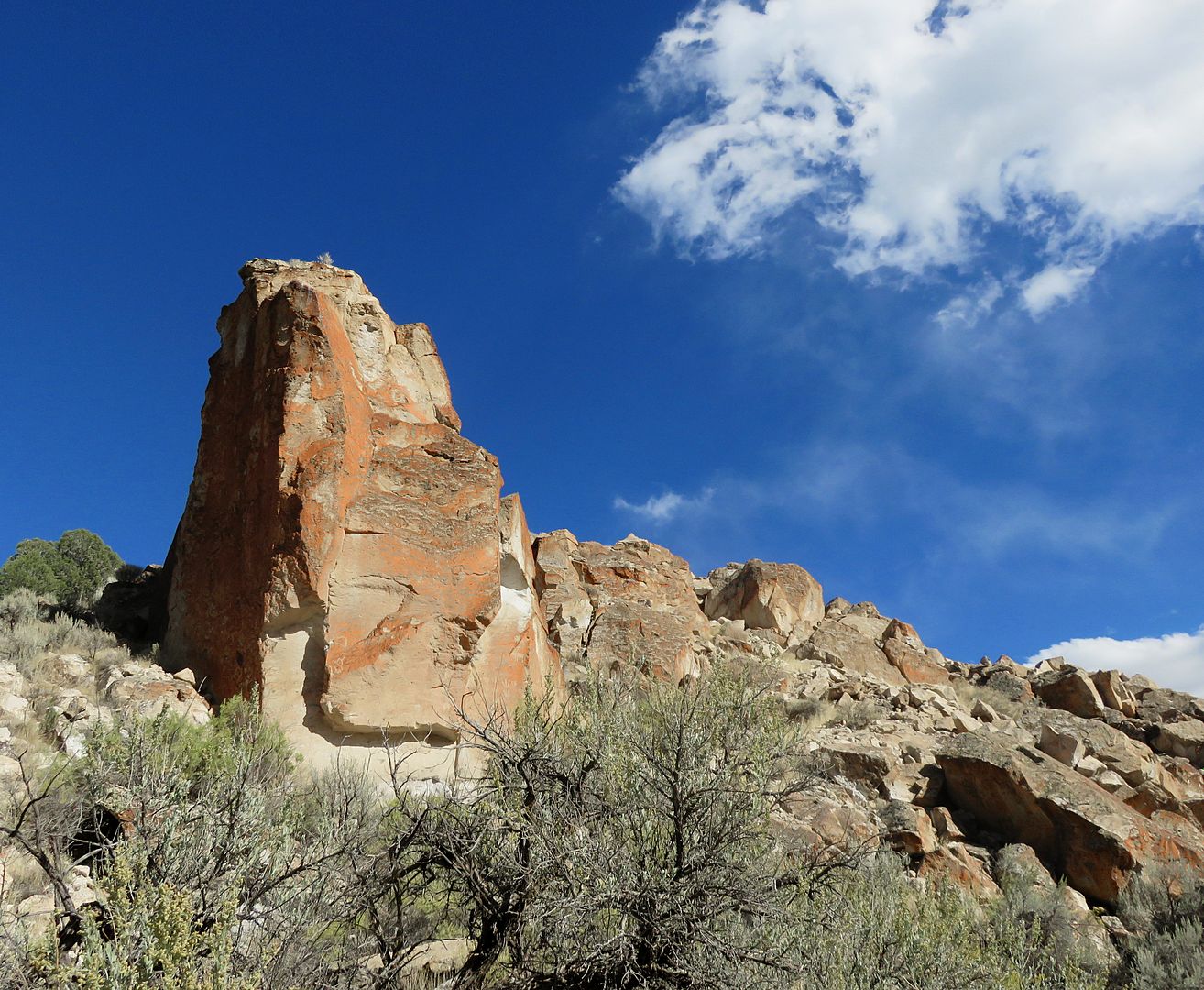
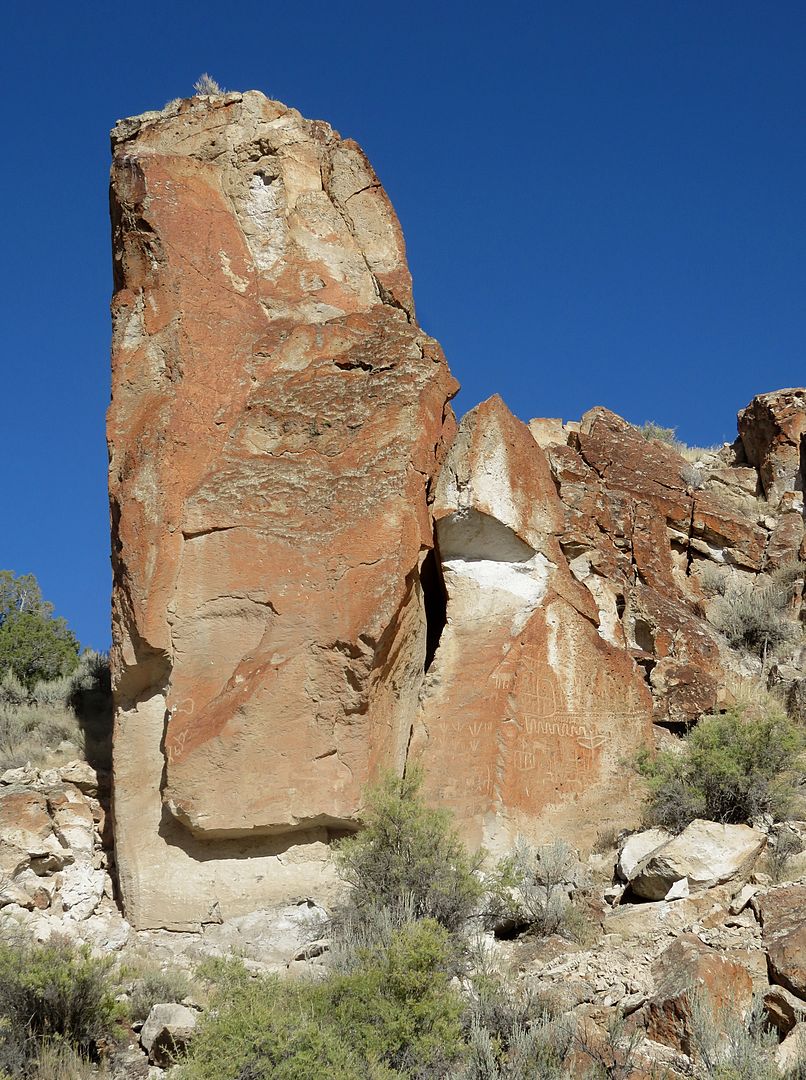
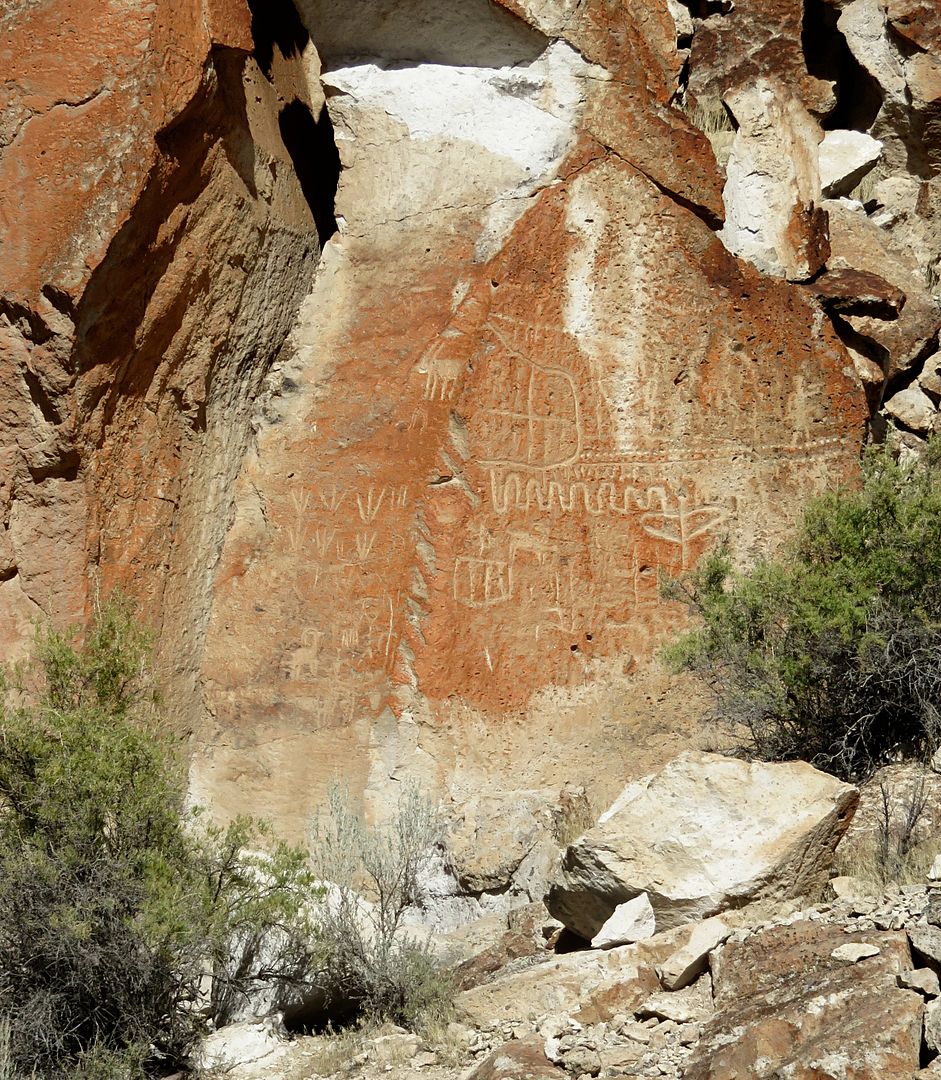
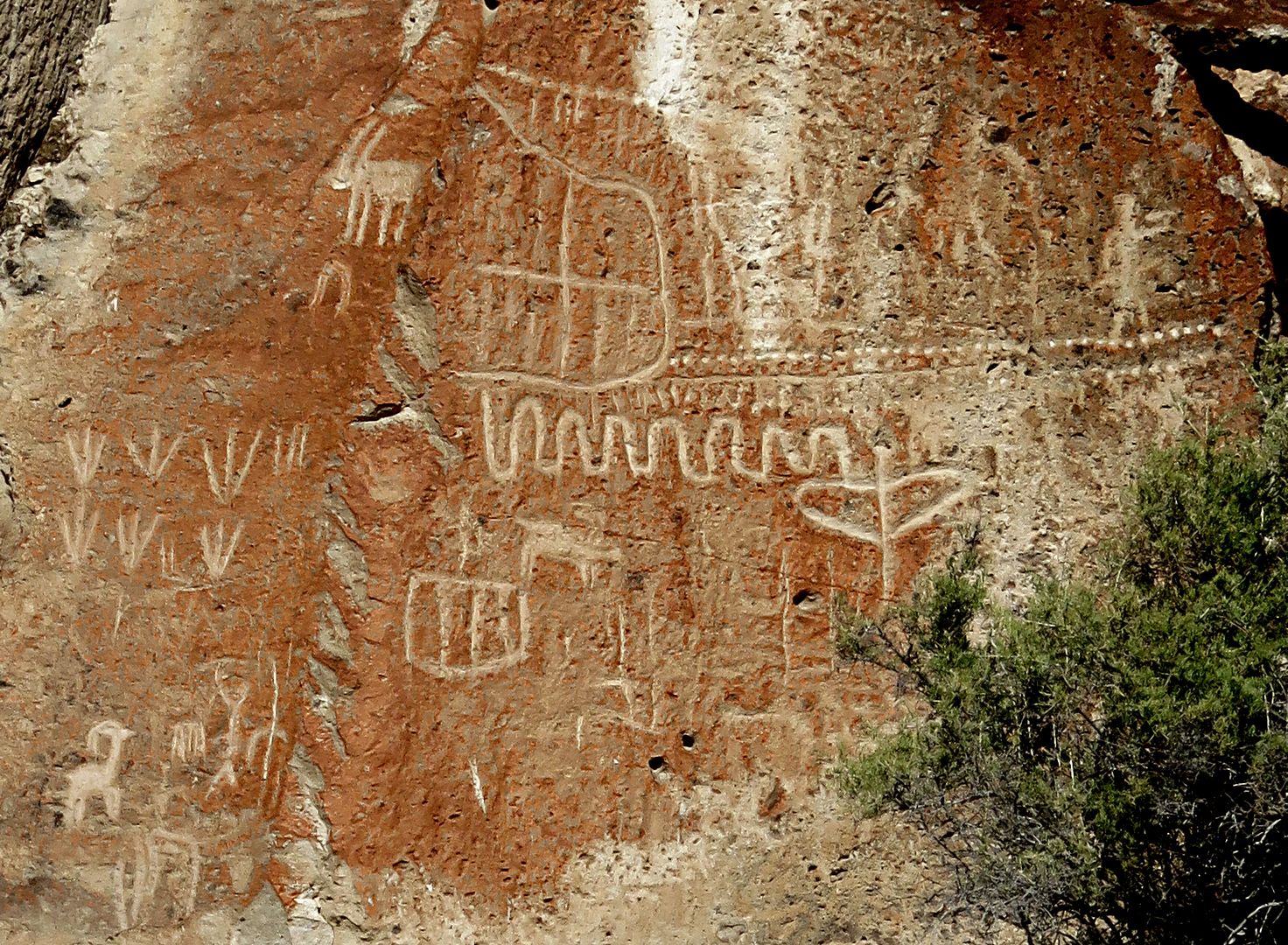
(to be continued…)